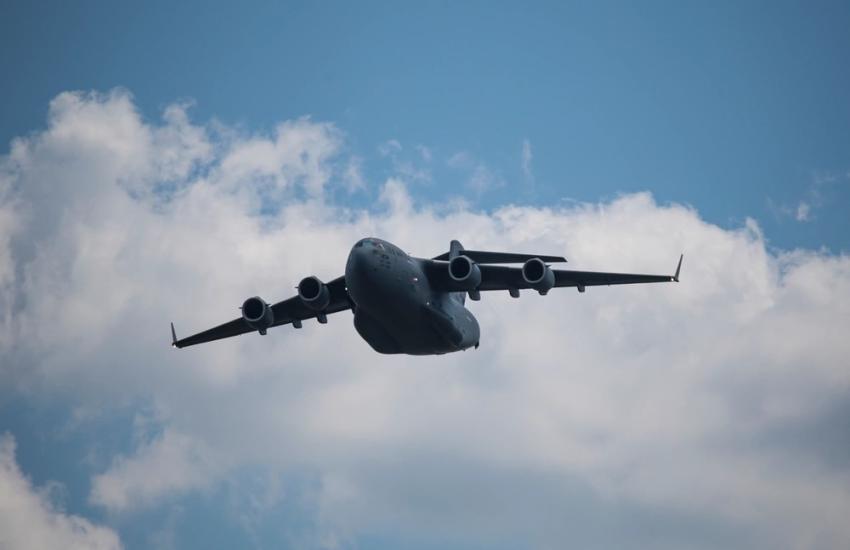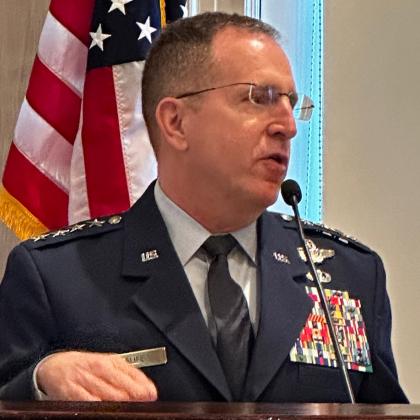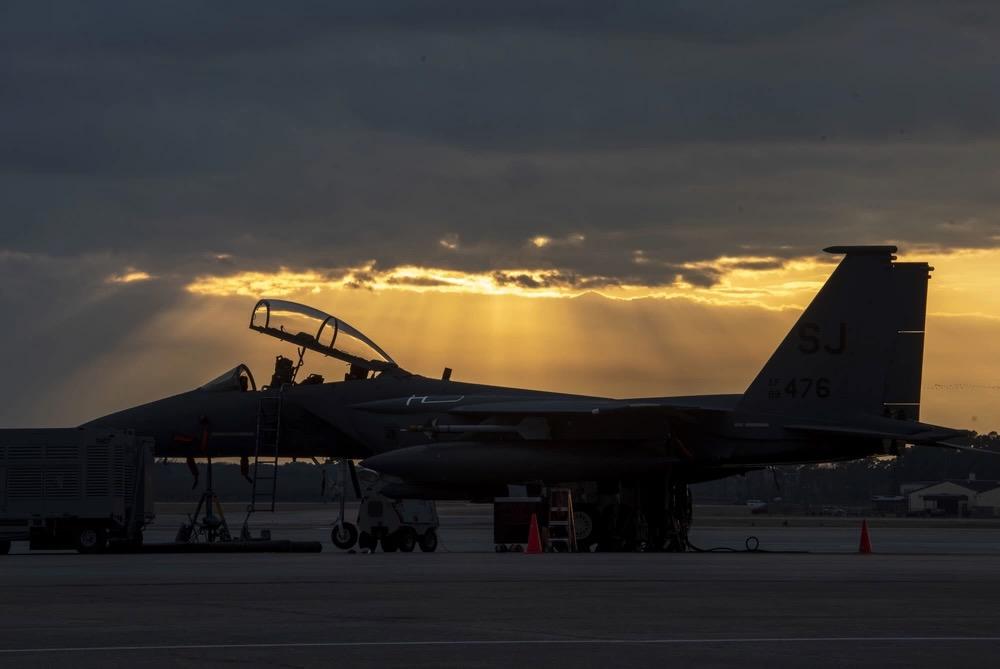AI Needs of the Air Force
The U.S. Air Force is not well positioned to leverage artificial intelligence (AI) and its existing data sources. The service is not organized, trained or properly equipped for AI, nor are its policies aligned to harness the decision advantages that AI, machine learning, automation and advanced data management could bring, said the Air Force’s new vice chief, Gen. James Slife.
And while the Air Force is pursuing its Department of the Air Force Battle Network, combined joint all-domain command and control (CJADC2), and modernizing its digital enterprise, the service continues to face data silos with untouched information. The service could more easily apply AI if its bifurcated, enormous data sources are leveraged, according to the vice chief who joined the Department of the Air Force staff in December.
And while the second-in-charge military leader will certainly ensure that Air Force Chief Gen. David Allvin’s vision of relentless readiness in this “time of consequence” is pursued, Gen. Slife aims to be the backstop, or the “hammer” for ensuring AI and advanced data management happens adroitly in the Air Force.
On the Air Force staff, the service also has a chief data and AI officer, Eileen Vidrine, who is retiring. A replacement is expected to be announced this summer, according to an Air Force public affairs official.
“The most common question I’ve gotten over the course of the last 60 days new to the job is, ‘What is your vision?’” Gen. Slife said, speaking at the AFCEA Washington DC Chapter luncheon on February 29. “My vision is whatever my boss’s vision is, and my priorities are whatever my boss’s priorities are. ... I will probably spend most of my time on institutional things. But to the extent I have passion areas that I really wanted to spend time on, one of them is this issue of data and AI. ... And I decided that I am going to be the ‘chief enforcer’ for the chief data and AI officer.
The former Air Force Special Operations commander used the AFCEA DC event as a forum to announce his interest in making sure AI happens in the service and advised the industry to develop and offer robust data-based solutions—actual technologies that go beyond the hype and name-dropping common these days with AI.
“It is not just the government that has work to do in this area,” Gen. Slife offered. “The industry does as well. At the last AFA [Air Force Association] conference in September, in my industry engagements, what I noticed was that everybody wanted to talk to me about AI. And my first question was, ‘Where is the training data?’ Or, ‘What is your data source?’ And [if] the response back to that was, ‘What are you talking about?’ I knew that I was talking to somebody that didn’t take AI seriously. This is a national issue we have to take on.”

The Air Force does not have any trouble generating data. The issue is the service’s inability at an enterprise-wide level to leverage the data sitting at its fingertips and use it in strategic and fruitful ways across the force, Gen. Slife stated.
For example, Hill Air Force Base, Utah, has a wing with more than 70 F-35s that conducts daily operations. “When those F-35s take off, the sensors start soaking up information,” the vice chief stated. “The AESA [active electronically scanned array] radar onboard maps and reports a detailed air picture and a detailed ground picture. The electronic warfare system onboard the airplane is soaking up signals that are in the environment, scanning the area, digging for threats. The electro-optical targeting system on the F-35 is creating and storing unique firing solutions, updating them many times every minute. And the communication suite is storing and recording every communication from every radio on the airplane. The pilot’s wingman, the battle manager, everything is being recorded. And cameras are creating a digital rendering of the environment for the pilot, giving in real time visual awareness of what’s going on.”
But even though the F-35s provide an integrated, detailed, cohesive image of everything needed during operations—recording terabytes of data every mission—the Air Force is not harnessing that data outside of those daily flights to improve its future operations, training or capabilities, the vice chief acknowledged.
“There are lessons learned built into that data,” he emphasized. “There is the wingman that did the wrong thing. There is the bad radio call. There’s the signal that we’ve never seen before. We need that to incorporate into our future missions to feed our algorithms. [It is] the truth required for accurate AI models. The problem is there is a high probability that every bit of that valuable data will never ever see the light of day. It will all be deleted, and we’ll record over it the very next day.”
Gen. Slife also offered a picture from C-17 operations, such as from Joint Base McGuire-Dix-Lakehurst in New Jersey. The aircraft utilizes the venerable military-standard 1553 databus to connect avionics, power, sensors, control systems and other components.
And across that databus is all the electrical data going between any two boxes on the airplane, from the flight control system to the actual flight controllers themselves to the GPS to the navigation systems and the radios,” Gen. Slife explained. “Every communication onboard that airplane is flowing on the serial databus. Every one of those messages has some data associated with it. Maybe it is data about the flap position sensor. Maybe it is data about an anomaly on the GPS system or on the aircraft itself.”
But even though the 1553 databuses offer a “treasure trove of information” every second, none of it is recorded, analyzed or saved, the general lamented. “None of it,” he said.

The problem is there is a high probability that every bit of that valuable data will never ever see the light of day. It will all be deleted, and we’ll record over it the very next day.
The general wants AI and data-related tools from industry to be able to pull out the crucial information for future operations. “Embedded in that data are early indications of a part failure,” Gen. Slife stated. “Embedded in that data are early indications of a cyber attack on that airplane coming in through some aperture of the airplane. The weather data, for example, is an aperture. There’s something coming in that is flowing across that data bus.”
In addition, artificial intelligence and data harnessing could help improve the service’s challenges regarding low-fail parts in its aging platforms, such as the F-15. The service could take siloed maintenance data, unify and leverage it for predictive manufacturing and safety needs.
“The F-15 Strike Eagle takes off from Seymour Johnson Air Force Base to fly a training mission off the coast of North Carolina,” Gen. Slife shared. “This happens each and every day. At the end of the mission, our young maintainers inspect that jet, and they find a few broken parts, among which are some low-break-rate parts that are no longer in our inventory. A low-break-rate part is a part that has a low probability of failure. The problem is that we bought those jets decades and decades ago, and now low-rate-break parts are starting to fail. And in many cases, we have no modern stockpile of those parts.”
Because even a single failure of those parts could have severe consequences, and combined with the fact that it can take contractors months or years to build out the necessary manufacturing base to recreate those parts that have long since gone out of production—i.e., sometimes they have to machine them from scratch—the Air Force needs AI and automation tools to help predict part demand.
“We don’t have any idea how many of those things we need and how often they will break,” the general noted. “There’s maintenance data for those aircraft. But it is spread across multiple databases in multiple different organizations that don’t talk to each other. All the data is bifurcated and sent to different agencies around the Air Force. And it’s too split up and disaggregated to allow us to make any predictions about the future.”
The Air Force will need other enabling solutions to harness AI and advanced data management, such as a secure way to transmit terabytes of mission data, say from the F-35s. “It’s hard to move that quantity of data around in relevant timescales,” Gen. Slife added. “And that data has a lot of noise in it.” The service needs tools and procedures to index, tag, clean and move around the data sets, preferably without having to draw largely on its human operators. “These data lakes have more unusable data than that which is actually usable,” he stated. “These lakes, therefore, have become data swamps.”
Overclassification of data remains an issue as well. “Frankly, our own culture of overclassification and overprotecting data goes past the point at which we lose the ability for it to become operationally relevant,” he admonished.
The Air Force needs AI and data management solutions that offer a more holistic approach. “It can’t just be a vendor or a product solving one problem,” Gen. Slife states. “We need to think about our data and AI challenges holistically across the department. And so that’s what I’m going to be doing, along with the Air Force’s chief data and AI officer.
“I’ve really become compelled over the last several years that, A, this could be a decisive warfighting advantage for us, and B, we are not at all organized, educated, trained. We don’t have the right policies; we are wholly out of position to be able to take advantage of this. So, this is going to be something that I’m going to spend the next X number of years as being the designated hammer inside the Air Force on. I think we’ve got a long way to go.”






Comments